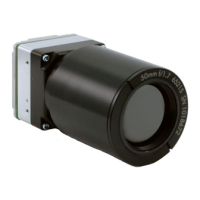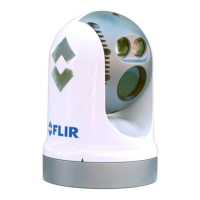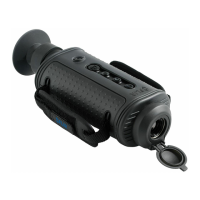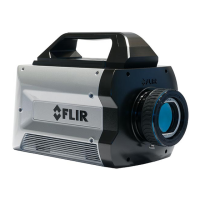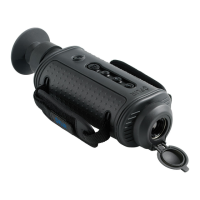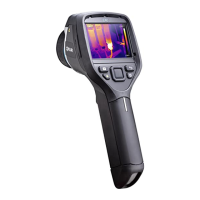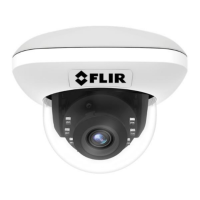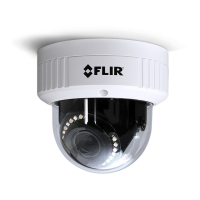3—Basic Operation of the Tau and GUI Tau User’s Manual
3-20 April 2009 TAU-0035-00-10, version 100
AGC Modes: The Tau provides six AGC algorithms for Image-Optimization:
Automatic: This is the most sophisticated algorithm
and for most imaging situations, the best all-around
choice. This factory default along with the default
parameter settings should be used in general imaging
situations. In Automatic, image contrast and
brightness are optimized automatically as the scene
varies. This mode provides an AGC which is based on
a histogram-equalization algorithm. Controls for the
ITT Mean (gray scale mid-point), Max Gain (AGC gain)
and Plateau Value are enabled.
The histogram equalization used in the automatic
mode scales the 14-bit to 8-bit transfer function
based on the number of pixels in a bin. The more
pixels in a bin, the higher the gain. But the Plateau
value is the pixels/bin limit when the transfer function is maximized. Normally 250 is
the plateau value for imaging cameras when more contrast is desired.
This algorithm analyzes the scene content in real time and redistributes the dynamic
range of the scene. The goal of this redistribution is that every one of the 128 bins of
display dynamic range has an equal number of pixels in it. This method tends to give
better scene contrast under conditions where the scene statistics are bimodal (for
example, a hot object imaged in a cold background. It should be noted that the heat
range in a given scene is not divided evenly across the grey levels sent to be displayed.
Instead, the AGC algorithm analyzes the scene and distributes the dynamic range to
best preserve statistical scene content (populated regions of the histogram) and
display a redistributed scene representation.
Once Bright: In this mode, the brightness (level) is calculated as the mean of the
current scene at the execution of the command (when the Once Bright button is
selected). The scene is mapped to the analog video using a linear transfer function.
Image contrast can be adjusted by the Contrast slider. This is the only user adjustable
parameter. Upon entry into the once bright mode, the currently-stored value of
contrast is applied (i.e. the power-on defaults or the last saved values).
Auto-Bright: In this mode, the brightness (level) is calculated as the mean of the
current scene just as in Once Bright mode. The difference with Auto-Bright is that
the values selected for the start and end of the linear transfer function are
automatically updated in real-time, not only at the start of AGC mode selection. The
Brightness Bias offsets the displayed image in intensity. Upon entry into the auto
bright mode, the currently-stored values of Contrast and Brightness Bias are applied
(i.e. the power-on defaults or the last saved values).
Manual: In this mode, image Contrast (gain) and Brightness (level) are entered
completely manually via the sliders. The scene is mapped using a linear transfer
function. Upon entry into the manual mode, currently-stored values of brightness and
contrast are applied (i.e. the power-on defaults or the last saved values).
Linear Histogram: Image contrast and brightness (gain and level) optimized
automatically based upon scene statistics using a linear transfer function. Controls for
the ITT Mean (sets grey scale midpoint) and Max Gain (AGC gain) are adjustable by
entering the value in the Automatic Parameters section. The Linear Histogram
algorithm uses scene statistics to set a global gain and offset (contrast and
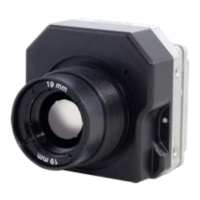
